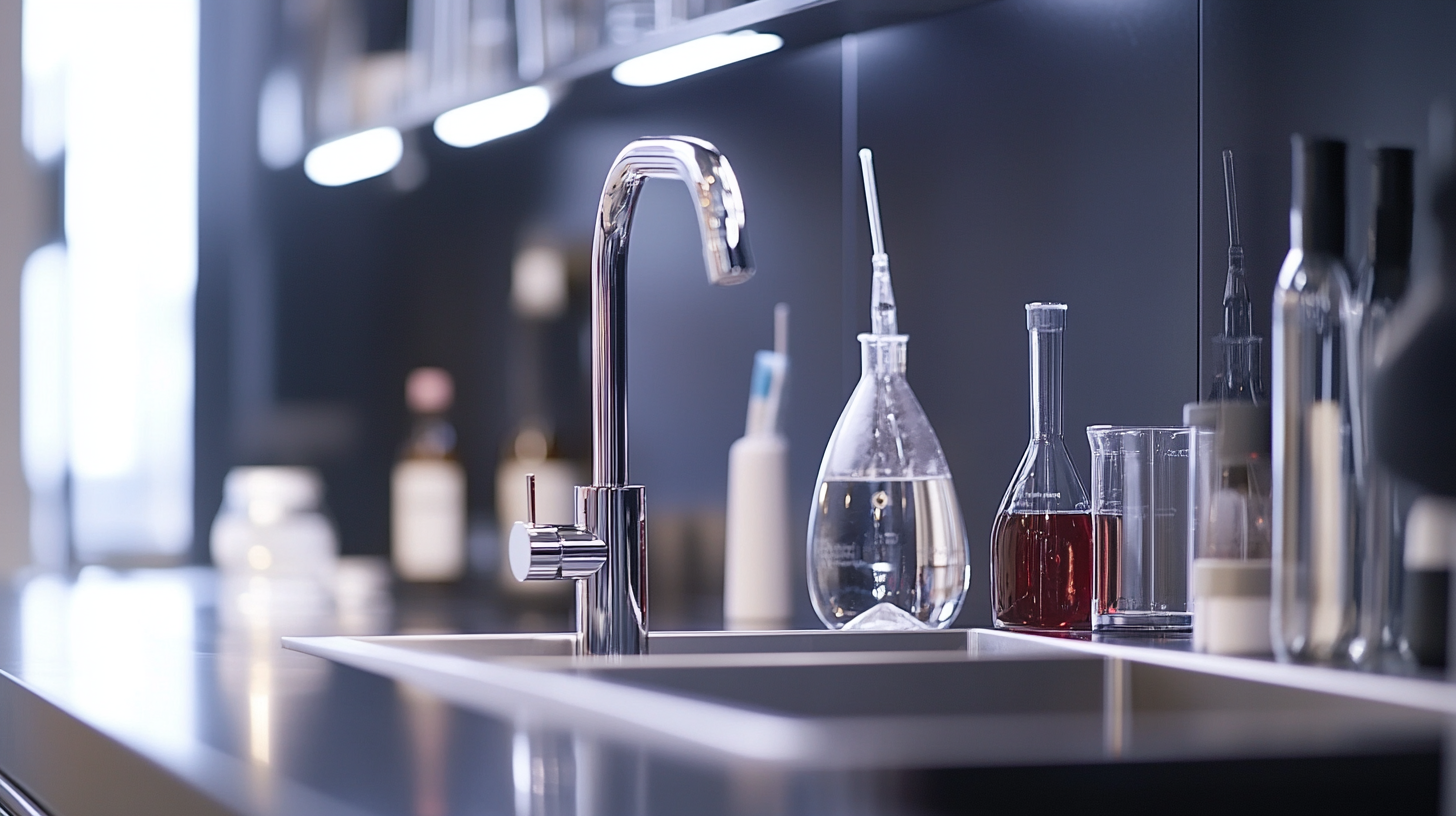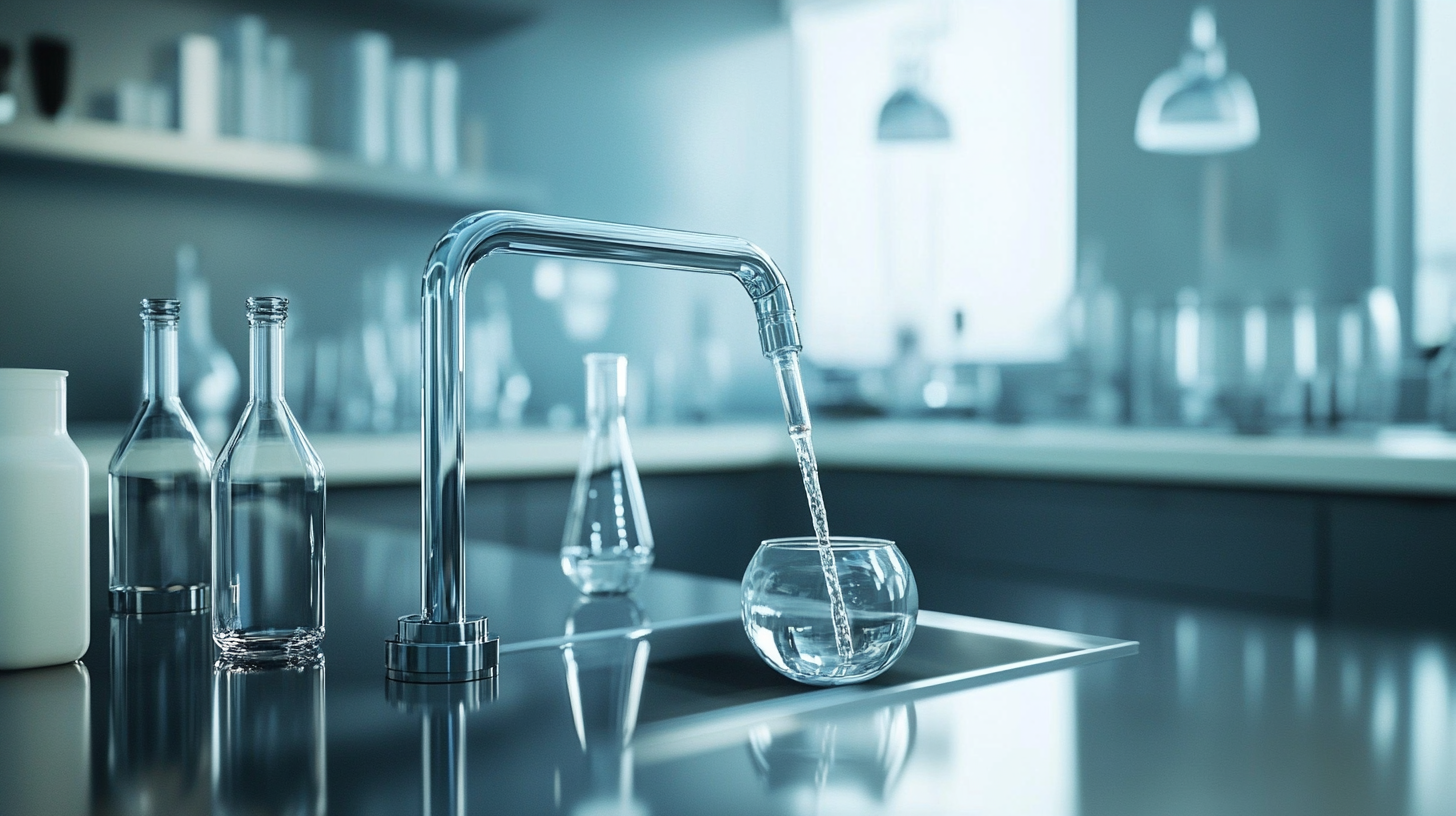In the ever-evolving world of laboratory equipment, the design and functionality of lab faucets play a crucial role in enhancing workflow efficiency and safety. As we approach 2025, it is essential for global buyers to stay informed about innovative trends that redefine the standards of lab faucets. This blog will explore cutting-edge examples of the best lab faucet designs currently available, highlighting their unique features and benefits. From sustainable materials to advanced user-friendly functionalities, the latest designs offer solutions tailored for modern laboratories. Whether you are an industry professional seeking the perfect lab faucet for your workspace or a buyer looking to enhance lab safety and performance, this blog will guide you through the latest trends and best practices in selecting the ideal lab faucet for your needs.

When it comes to laboratory environments, the design of lab faucets plays a critical role in ensuring both functionality and aesthetics. Modern lab faucets are no longer just utilitarian fixtures; they have evolved into well-designed components that enhance the overall workspace. According to a report by MarketsandMarkets, the global laboratory faucet market is expected to grow significantly, driven by advancements in laboratory design and a heightened focus on ergonomics.
Innovative designs include features such as touchless operation, which maximizes hygiene and minimizes contamination risks. These faucets are engineered with materials like stainless steel and corrosion-resistant alloys, ensuring longevity and ease of maintenance. The aesthetics of lab faucets have also taken center stage, with sleek lines and customizable finishes that allow laboratories to reflect their brand identity while meeting stringent functionality standards. A study by IBISWorld highlighted that aesthetically pleasing lab environments contribute to increased productivity and employee satisfaction, indicating that the choice of fixtures is paramount in creating an effective workspace.
As a testament to this trend, many leading manufacturers are incorporating integrated technology into their designs, such as digital temperature controls and real-time usage monitoring, providing a sophisticated touch that aligns with contemporary laboratory needs. The marriage of striking design and practical performance in lab faucets truly transforms laboratories into spaces that inspire innovation and collaboration.
In recent years, the push for sustainability has transformed the design of lab faucets, leading to innovative products that prioritize environmentally friendly materials. Manufacturers are increasingly incorporating recycled elements, such as reclaimed metals and bio-based plastics, in their lab faucet designs. These materials not only reduce environmental impact but also enhance durability, ensuring that these fixtures can withstand the rigors of laboratory environments.

Moreover, the trend towards sustainable materials is not just limited to the raw components; it extends to the entire manufacturing process. Many companies are adopting eco-friendly practices, such as low-energy production techniques and water-efficient testing. This commitment to sustainability resonates with global buyers who are increasingly aware of their own environmental footprints. As laboratories seek to implement greener practices, the adoption of modern lab faucets made from sustainable materials represents a significant step forward in fostering an eco-conscious approach to scientific research and development.
In the world of laboratory equipment, faucets play a crucial role in ensuring safety and efficiency. The trend towards customizable lab faucet designs is reshaping how facilities approach their specific needs. By allowing users to choose materials, configurations, and finishes, manufacturers provide flexibility that aligns with various laboratory environments. For instance, a lab dealing with corrosive chemicals may benefit from faucets made of specialized materials that can withstand such conditions, while a cleanroom facility could require faucets with smooth surfaces that reduce contamination risk.
Additionally, incorporating smart technology into faucet designs has revolutionized user experience. Features such as touchless activation and adjustable flow rates can be tailored to minimize waste and enhance hygiene. Users can even request integrated filtration systems for purer water supply in biological and chemical labs. As laboratories continue to evolve, the emphasis on customizable features not only addresses functionality but also promotes a sustainable and safe working environment, accommodating diverse user needs across the globe.
In recent years, laboratory faucet designs have evolved significantly, integrating innovative technologies to enhance efficiency and water quality monitoring. Smart lab faucets equipped with IoT capabilities allow for real-time monitoring of water quality, ensuring that researchers can conduct their experiments without the worry of contaminants. These advanced systems not only provide accurate data but also automate notifications for maintenance and replacement, which is crucial in settings where high purity is required.

The incorporation of machine learning algorithms further optimizes the functionality of lab faucets. By analyzing water usage patterns, these intelligent faucets can adjust flow rates accordingly, conserving water without sacrificing performance. This efficiency is essential in laboratories where sustainable resource management is becoming increasingly necessary. As global buyers look for reliable solutions for their laboratories, these innovative faucet designs stand out, presenting a combination of technology and practicality that meets the evolving demands of scientific research.
When selecting lab faucets, global buyers face a plethora of choices, each boasting unique features tailored to specific laboratory needs. Brands such as Fisher Scientific are acclaimed for their durability and sturdy construction, making them ideal for high-traffic environments. On the other hand, Grainger offers a selection of ergonomic designs that prioritize user comfort, reducing strain during prolonged use. A comparative analysis reveals that while functionality remains paramount, aesthetics are gaining traction, especially with brands that integrate modern design elements to enhance visual appeal in laboratory settings.
Tip: When choosing a lab faucet, consider the specific applications you'll be using it for. Faucets with adjustable flow rates or specialized nozzles can vastly improve efficiency in various lab tasks.
Another noteworthy brand is Jacobs, known for its innovative smart faucets that integrate advanced technology, allowing for touchless operation and automatic shut-off features. This emphasis on hygiene and efficiency is becoming increasingly important in a post-pandemic world. Additionally, local brands often offer customizable options that cater to specific regulations and requirements of various regions.
Tip: Always check for compatibility with your existing laboratory infrastructure to avoid costly modifications later. Investing time in understanding your lab's unique requirements will ultimately lead to smarter purchasing decisions.
